Dining outdoors should be part of every vacation getaway. Whether…

Uncork the Bubbly: The Best Day Tour to Champagne, France
The Marquise de Pompadour, courtesan of King Louis XV of France, once said, “Champagne is the only wine in the world that makes every woman beautiful.”
That alone seemed reason enough to find the best day tour to Champagne, France to learn more about this magical elixir. That, and the fact that this beverage of celebration, ship launching and, if you ask me, almost any occasion, is truly delightful.
From Paris, it takes less than an hour by train to get to Reims, the hub of the Champagne region. But you’re limited in what you can see in the area if you’re getting around on foot. As for driving and champagne tasting, it’s not a good combination.
The Best Day Tour to Champagne, France
I was thrilled to join J.B. (Jean-Bernard) Pétin of Paris Wine Day Tours and a small group of like-minded travelers for a day-long ‘Champagne Enthusiast Tour’. Coming from a family that’s been in the wine business for generations, J.B. knows his stuff. He’s also the kind of guy who seems like an old friend the moment you meet him. His philosophy for the tour? “Enjoying a glass of wine is always better with friends.”
And when it’s a glass of champagne, it’s bubblier.
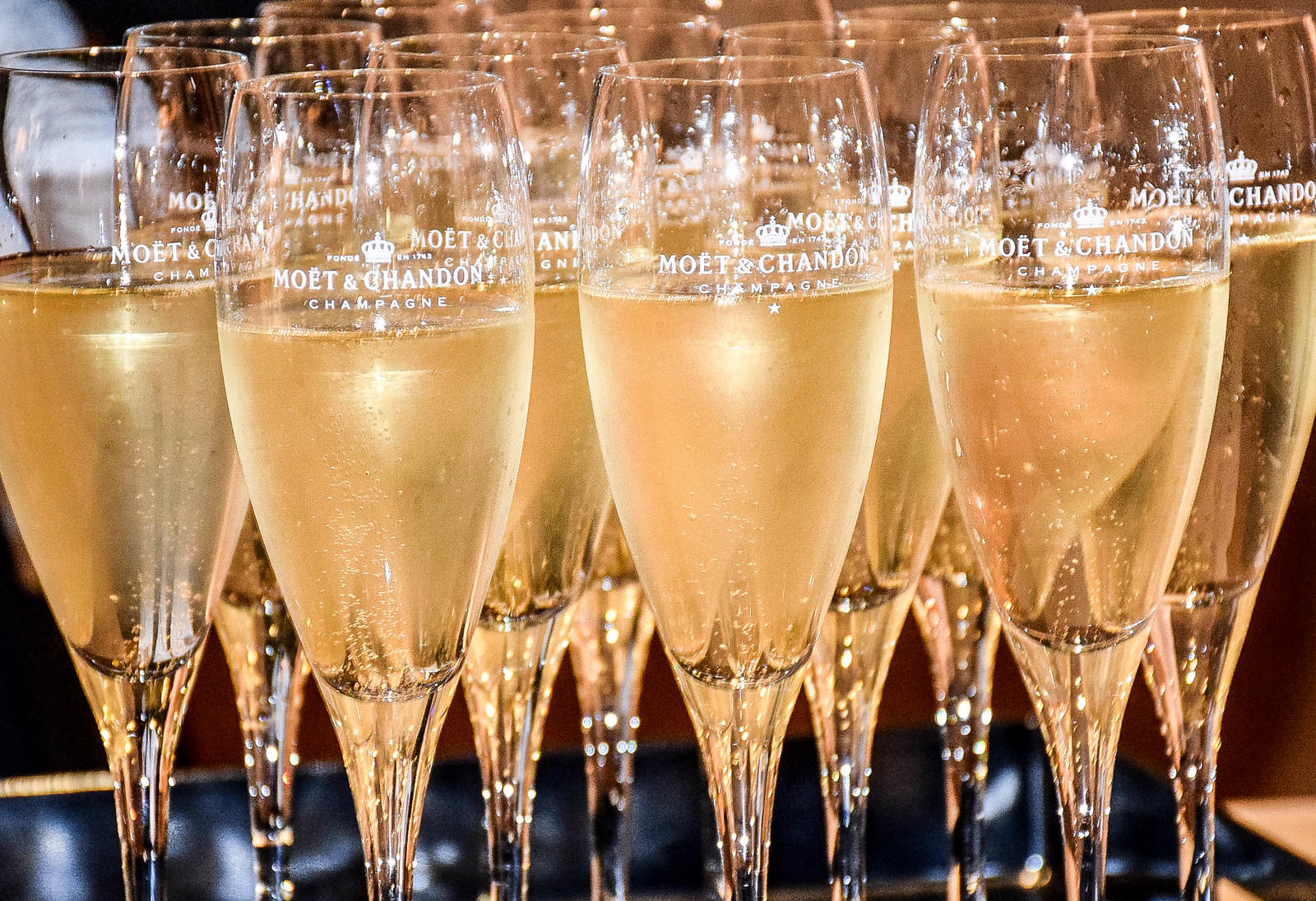
The tour packs a lot into a day, starting with pastries in the morning and including visits to two prestigious champagne houses and one family operation, as well as a visit to a local market and a gourmet lunch in a stylish Art Deco restaurant.
Here are just some of the highlights.
The Legend of Dom Pérignon

During the day, we got to know “the Dom”. Dom Pérignon isn’t just the name of a pricey bottle of champagne. He was an actual guy – – a Benedictine monk, in fact, who is widely credited with inventing champagne. Dom (because I feel we are on a first-name basis now) served as the cellar master in the Abbey in Hautvillers. According to the story, upon discovering a second fermentation which creates the bubbles, Dom is reported to have said, “Come Quickly, I am Drinking the Stars.”
Some say there’s a healthy dose of folklore to the story, but it goes well with a little champagne. Either way, the monk is regarded for his knack for selecting the best mix of grapes from different varieties of vines, a science that is still used today.
We visited Dom’s statue at the Moët & Chandon cellars in Épernay and his grave at the Abbey in Hautvillers.
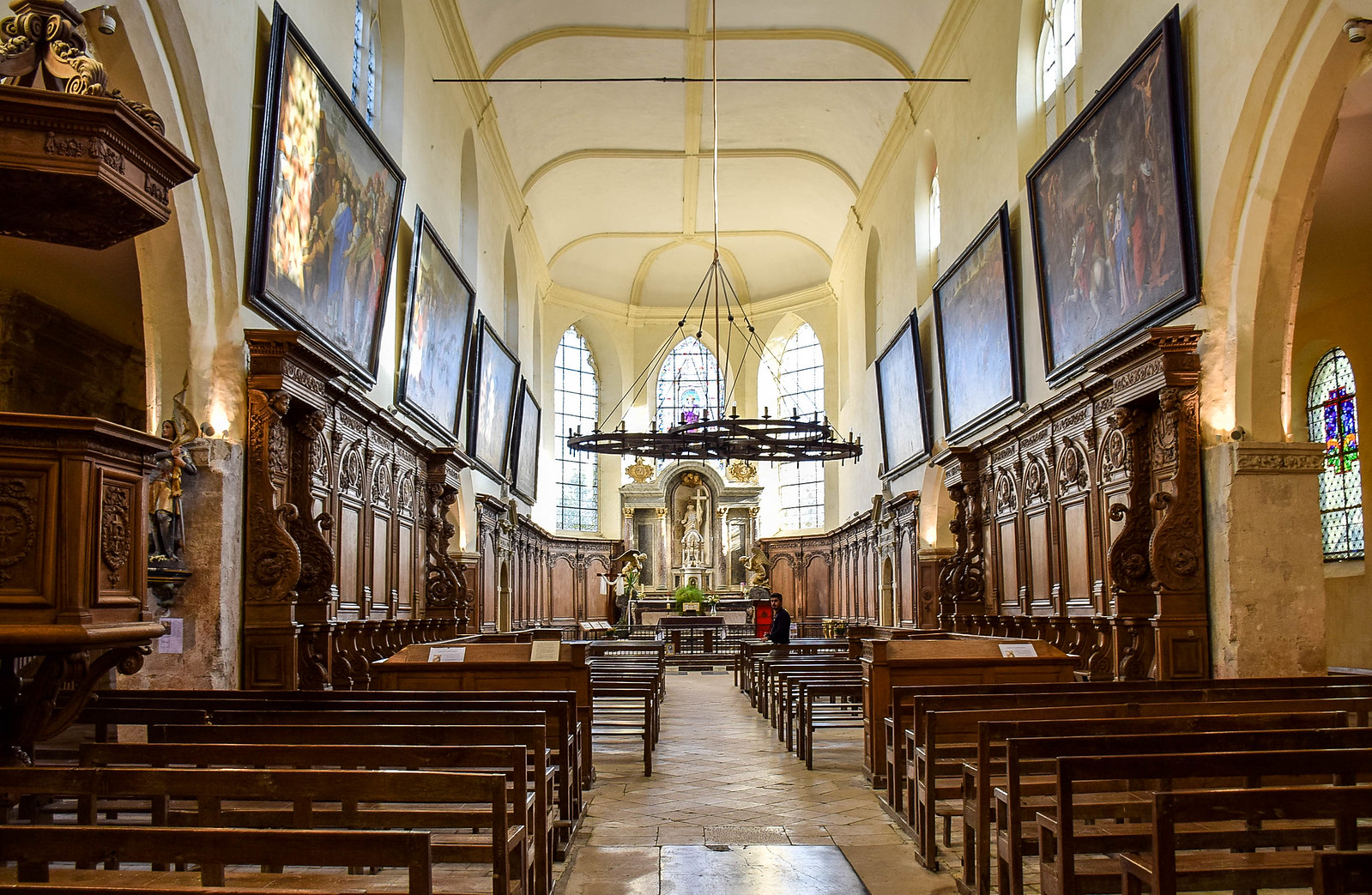
The Terroir

According to law, only champagne produced in Champagne can be called by that name and the French authorities are not amused by fakes. Producing this happy drink is serious business.
J.B. described the terroir of the Champagne region — that special mix of soil, climate and sorcery that goes into producing the grapes. Champagne is the northernmost wine growing region in France, but it benefits from having chalky soil, which stores water. It also absorbs the sun’s heat during the day and releases it at night to keep the vines from freezing in early spring.
Did you know that red grapes are used in champagne?
The juice of all grapes is actually white. There are three kinds of them in champagne: Pinot Meunier is for suppleness and roundness. Pinot Noir adds body and intensity, with berry notes, and Chardonnay is for elegance, acidity and freshness.
How do they get the bubbles in there?

We toured and tasted at the famous cellars of Mumm in Reims and Moët & Chandon in Épernay, learning the history and even a little gossip about these shrines to champagne. One fact for your next trivia game is that Mumm is the “official supplier” to Her Majesty Queen Elizabeth II, which is why there’s a royal warrant on the neck of the bottle. And, by the way, Moët is not pronounced ‘Mo-way’ in your best French accent, it’s ‘Mo-wett’. Now we both know.
As for how champagne is made, here’s the short version of the story from the tour.
One of the secrets lies in the recipe. Most champagnes are made from blending wines from different years, plots and varieties. At Mumm, they showed us the recipe book they’ve used since the beginning, a veritable bible of champagne.
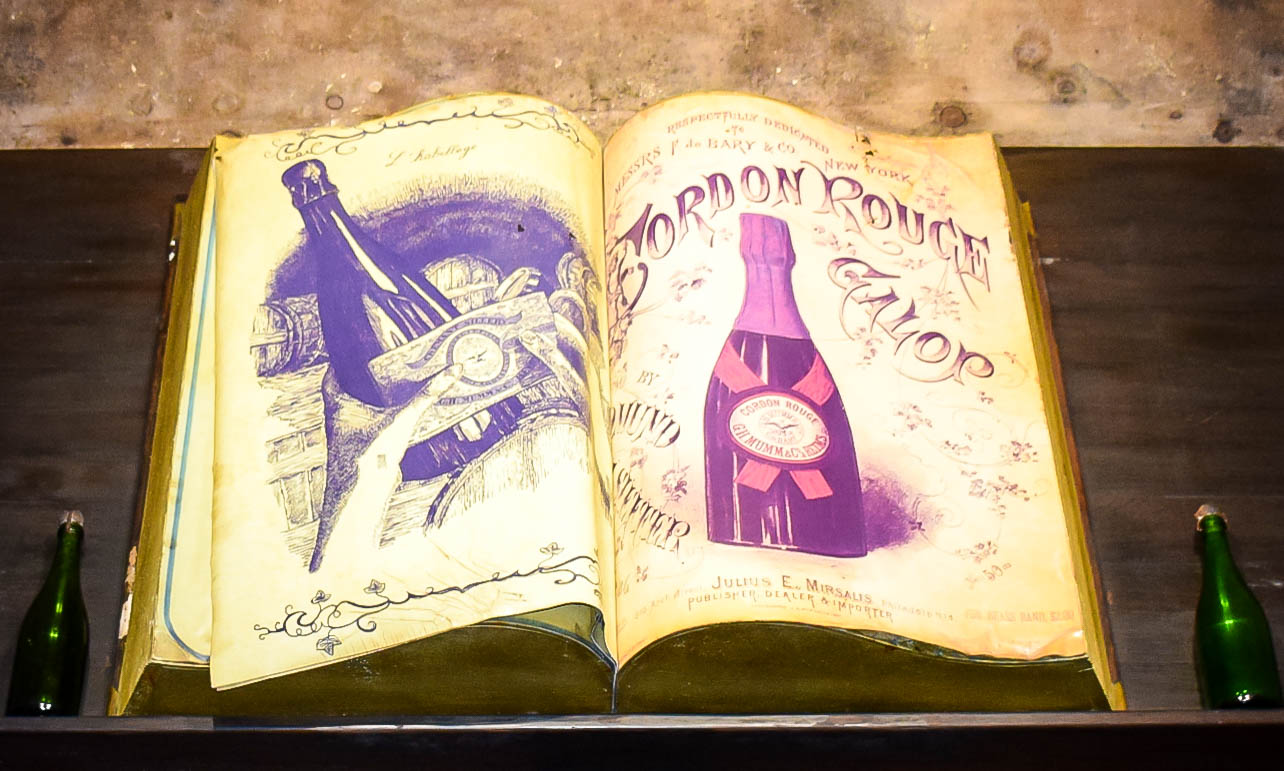
It may not sound appetizing, but the bubbles are the result of two fermentations. A combination of yeast and sugar is added to the base wine resulting in the release of carbon dioxide. But what keeps the bubbles going is a second fermentation, caused by adding a little more yeast and sugar when the wine is bottled. Then the wine is left to age for at least 1.5 years in half-lit, dank underground cellars. There are 200 kilometres of tunnels and cellars underneath the city of Reims (ideal for a grand game of hide and seek, don’t you think?)
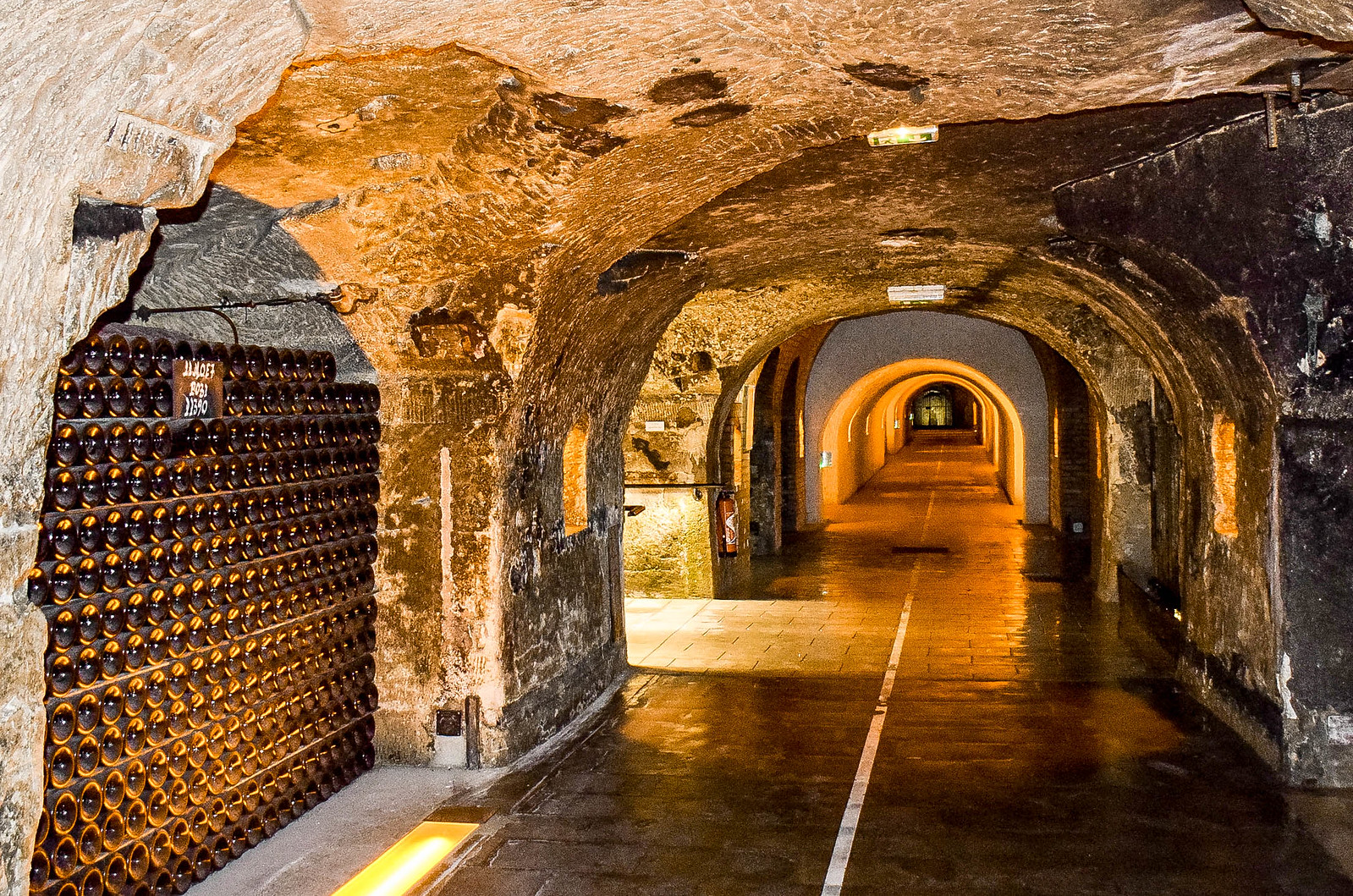
After aging, it’s someone’s job to turn each bottle slightly every day for about two months until the sediment settles in the neck of the bottle. When the bottle is opened, the pressure forces the sediment to come blasting out. Then the bottle is quickly corked to keep the bubbles inside, preserving the magic that is champagne.

Sobering Moments
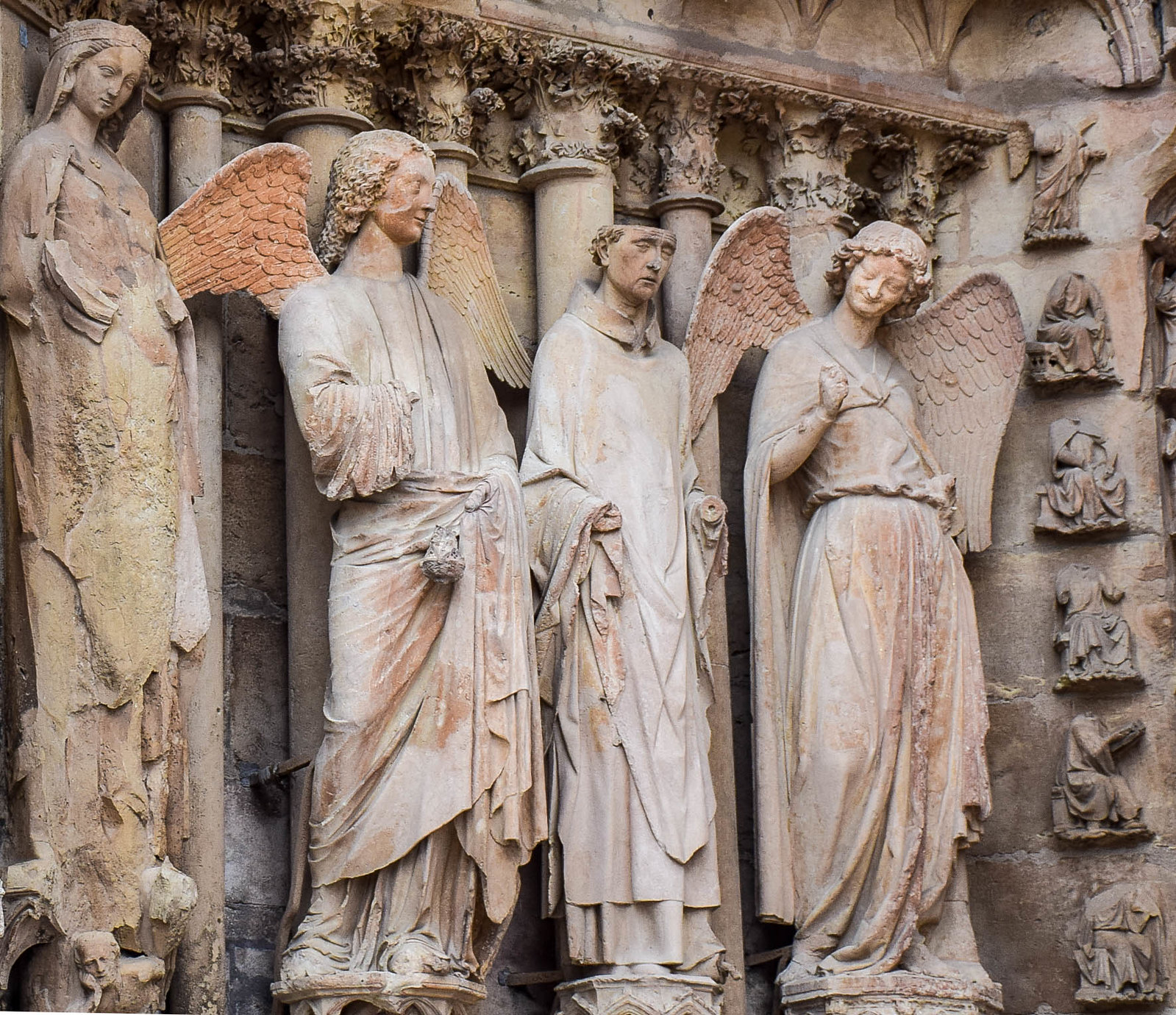
The day isn’t all about quaffing champagne. J.B. also wants to give his guests a sense of the place – – its history and its people.
There is no shortage of tales from the past in Reims (pronounced ‘Rance’). It’s called the city of kings because the kings of France were crowned in the cathedral, the Notre-Dame de Reims. This gothic masterpiece, which dates back to the early 1200s, is adorned with 2300 statues. J.B. pointed out the most famous one, a smiling angel at the north portal. Reims was devastated by World War I, and the smiling angel was no exception. But she was restored, and perhaps her smile is symbolic of the city’s survival. Either that, or it was the champagne they served at the kings’ coronations.
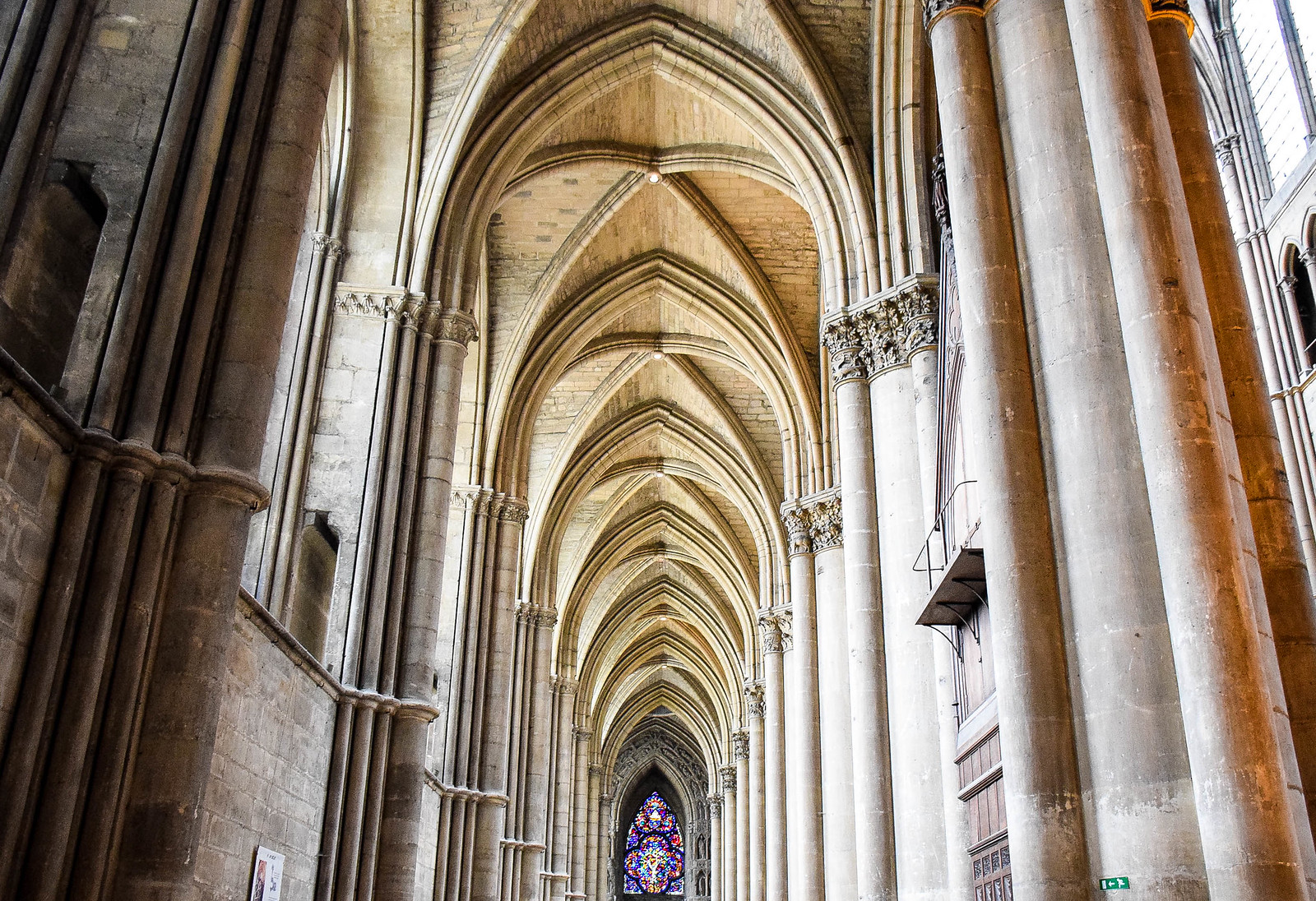

Later that day, we bore further witness to the war’s devastation as we visited a cemetery for Commonwealth soldiers who fought and died here. We each took a quiet moment as we walked among the headstones, observing how short life was for these young men.

The Sun Came Out in Hautvillers
The day had started out foggy and damp, but when it came time to stroll in the vineyards, the sun came out.
It was perfection. So much so that at our last champagne stop, they served the champagne outside so that we could enjoy it while overlooking the bright vineyards and the village of Hautvillers.
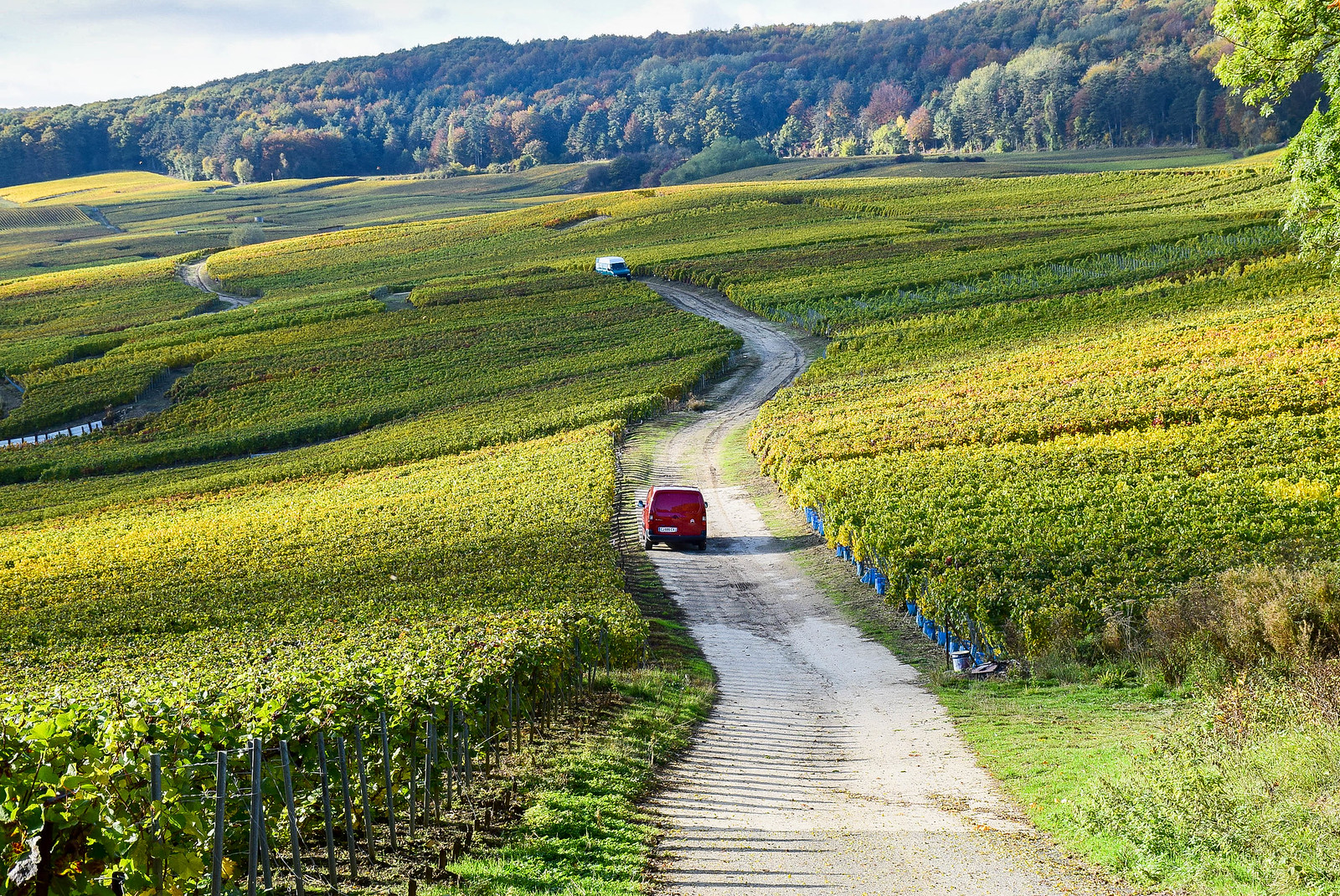
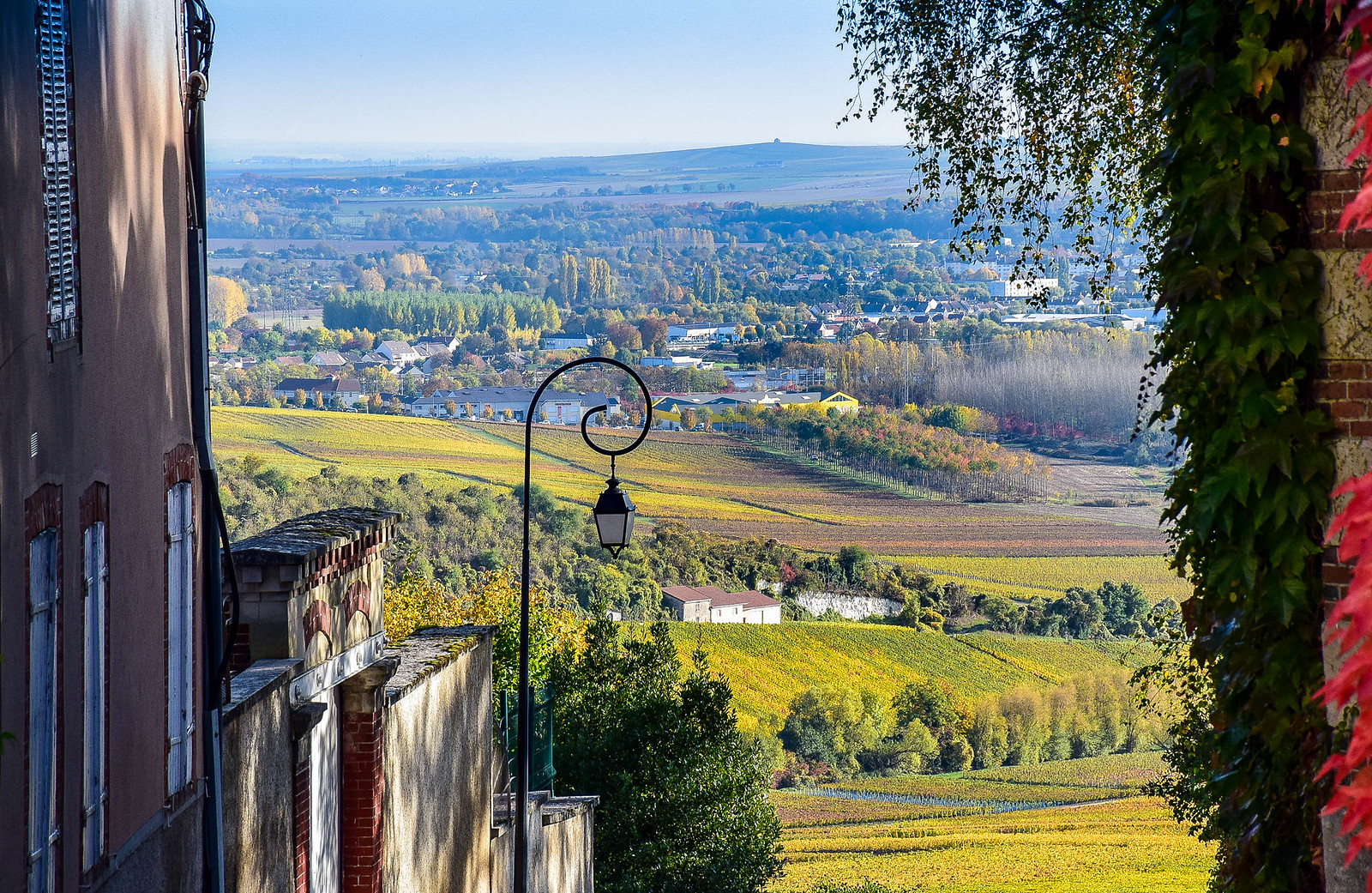
Hautvillers, of course, is where Dom Pérignon lived, and is now home to over 30 family winemakers. It’s a place that is quaint beyond reason.
There, we visited Champagne Joseph Desruets, where they press the grapes using an old-fashioned press that’s been in the family for over 100 years. J.B. introduced us to the winemaker, François Desruets and his family, and we chatted about the business as we sipped champagne in the sunshine. Like this happens every day.


Maybe it had something to do with the view, the ambiance and the conversation, but with notes of apples, honey and sunshine, I thought it was the best champagne we had tasted.
It was a perfect way to cap off a truly memorable day.
There’s bliss in the bubbles. Cheers.

I only drink champagne on two occasions. When I am in love and when I am not. -Coco Chanel
More Information:
Paris Wine Day Tours: Click here.
Tourism Information: Reims Tourist Office
Champagne Houses Visited: G.H. Mumm Champagne, Moët & Chandon Champagne, Champagne Joseph Desruets
Where to stay in Paris: Check hotel deals in Paris here.
Suggested Reading:
Champagne [Boxed Book & Map Set]: The Essential Guide to the Wines, Producers, and Terroirs of the Iconic Region
But First, Champagne: A Modern Guide to the World’s Favorite Wine
Paris Wine Day Tours provided a media discount to Travel Bliss Now, but my opinions are always my own.
Pin it:
Six Secrets to Good Eating in Paris
If You Liked Midnight in Paris, You’ll Love These Books
The Gourmet Paradise in France You Must Visit







I’m not really a champagne fan, but that looks like an awesome tour.
It was. There is also good food and lots of fascinating history.